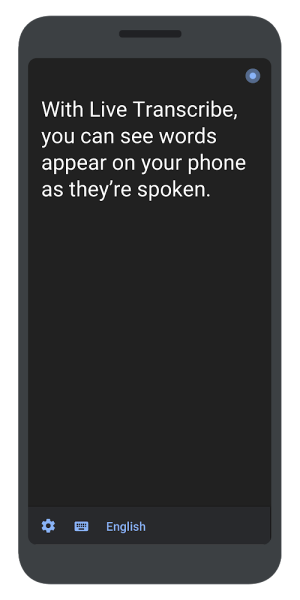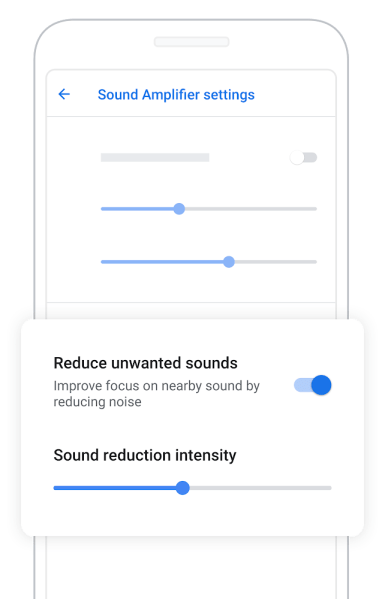testsetset
Deafness affects millions of people around the globe. Close to one in 20 Americans is currently deaf or hard of hearing, and about two to three of every 1,000 children in the U.S. are born with a detectable level of hearing loss in one or both ears. Moreover, the World Health Organization estimates that by the year 2055, there will be 900 million people with hearing loss.
To help those and others with auditory disabilities, Google is releasing two apps — Live Transcribe and Sound Amplifier. The first uses machine learning algorithms to turn real-world speech into real-time captions and the second to augment and amplify surrounding sounds with nothing more than a smartphone’s built-in microphone. Both are available on Android starting this week.
“We believe in the power of technology to help break down barriers and make life a little easier for everyone,” Brian Kemler, product manager at Google’s Android Accessibility team, wrote in a blog post. “With both Live Transcribe and Sound Amplifier, our goal is to help the hundreds of millions of people who are deaf or hard of hearing communicate more clearly.”
Live Transcribe, as the name implies, uses a smartphone’s microphone (or external microphone) and Google Cloud speech API to caption real-time spoken words and phrases in over 70 languages and dialects. Google says it worked with Gallaudet University, a college for deaf and hearing-impaired people, to design and validate Live Transcribe’s design, which delivers haptic feedback that alerts users if someone’s trying to talk to them and a loudness indicator that indicates the surrounding environment’s noisiness. It additionally packs a keyboard to enable two-way conversation for users who can’t or don’t want to speak.
June 5th: The AI Audit in NYC
Join us next week in NYC to engage with top executive leaders, delving into strategies for auditing AI models to ensure fairness, optimal performance, and ethical compliance across diverse organizations. Secure your attendance for this exclusive invite-only event.

Above: Google’s Live Transcribe app.
Google says that Live Transcribe is rolling out in a limited beta worldwide via the Play Store and is preinstalled on Pixel 3 devices. (To enable it, head to Accessibility Settings and start Live Transcribe from the accessibility button on the navigation bar.)
Sound Amplifier — which was announced last year at Google’s 2018 I/O developer conference — is equally straightforward. It augments sounds in wired headphones by increasing quiet sounds while “not over-boosting loud sounds,” a feat made possible by Android P’s dynamics processing effect engine. A variety of settings sliders and toggles allow you to customize its sound enhancement and noise reduction algorithms.
Like Live Transcribe, Sound Amplifier comes preinstalled on the Pixel 3. It’s also available in the Play Store for phones running Android 9 Pie or later.

Above: Google’s Sound Amplifier app in action.
Sound Amplifier and Live Transcribe contribute to Google’s robust and growing suite of accessibility apps. Last year, the Mountain View company debuted Lookout, which provides auditory cues to visually impaired people to help them understand their environment, and Voice Access, an app that replaces touchscreen tap interactions with their voice equivalents.
More broadly, the company has made a concerted effort to improve the Android experience for deaf and hard of hearing users. In August 2018, it published a new open specification intended to kickstart the development of hearing aids that work flawlessly on Android phones across Bluetooth low energy (LE), replete with low latency and minimal impact on battery life. And in March 2016, Google launched Accessibility Scanner, an automated tool that evaluates apps and suggests ways they might be improved for visually and auditorily impaired users — by enlarging small touch targets, for example, or by changing the contrast.

